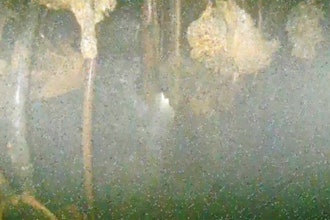A federal investigation into a poisonous gas leak that killed four workers at a Houston-area chemical plant in November found weaknesses and failures in the facility's safety planning and procedures, officials said Wednesday.
The findings were announced in an interim report released by the U.S. Chemical Safety Board regarding the accident at a DuPont plant in La Porte, Texas. The report says neither workers nor the public are protected against chemical exposure by equipment or safety procedures at the facility.
"DuPont ... has long been regarded as a safety leader in the chemical industry. But our investigation has uncovered lapses, weaknesses or failures in the company's safety, planning and procedures, safety management systems that could have and should have prevented the accident and this loss of life," Vanessa Sutherland, the board's chairwoman, said at a news conference.
The unit where the workers died did not having adequate ventilation or air monitoring to ensure employee safety, and procedures weren't followed that would have restricted worker access into areas where ventilation fans weren't working, according to the report.
A review by DuPont of systems at the plant that control overpressure in equipment is in year four of a five-year assessment, but is only 35 percent complete, according to the board.
"DuPont has not made this program a sufficiently high priority, has limited internal resources and has fallen far behind schedule," the board said in the report.
James O'Connor, the La Porte plant manager, said in a statement Wednesday that the company is addressing the board's recommendations and cooperating with investigators. The plant is closed, "and will remain so until DuPont has executed a comprehensive and integrated plan to safely resume operations," he said.
In its statement, DuPont said it "respectfully disagrees with aspects of the report."
The workers died after being exposed to methyl mercaptan, a raw material used to manufacture an insecticide. Workers did not realize they were releasing the deadly gas that had built up in piping and a storage tank as they drained waste gas from other piping at the unit.
The piping the workers opened that released the poisonous gas was intended to release nitrogen vapor. DuPont had already investigated that system as part of its five-year review and considered it in compliance with industry standards, the board said. It was not standard procedure for workers to wear breathing protection when draining this piping, but if they had, they would probably still be alive, said Dan Tillema, the safety board's lead investigator.
The safety board previously said inspectors found the plant had a faulty ventilation system but that even if ventilation fans had been working, the building's design may not have protected workers from the gas being released.
The interim report also said detectors at the plant that warn of methyl mercaptan releases "provided essentially no value to DuPont personnel or to the public" and employees had become so accustomed to the odor of methyl mercaptan that they didn't recognize it presented a hazard.
John Morawetz, director of a worker health and safety education center with the International Chemical Workers Union Council, which represents about 150 workers at the plant, said various things could have been done to prevent the deaths.
"Right now (DuPont is) moving forward and doing the right thing," Morawetz said, adding he hopes the board's final recommendations include how workers are trained to know what hazards they can face.
Earlier this year, the Department of Labor's Occupational Safety and Health Administration criticized safety procedures at the plant and said the deaths were preventable. OSHA has fined DuPont $372,000 for various safety violations and placed the company on its severe violator enforcement program.
The Chemical Safety Board made five safety recommendations in its interim report, including conducting engineering evaluations of the pressure relief and air ventilation systems in the unit where the workers died and ensuring participation by workers in implementing the recommendations.
The board investigates industrial and chemical accidents, but it has no regulatory authority and can only make recommendations on accident prevention.






















